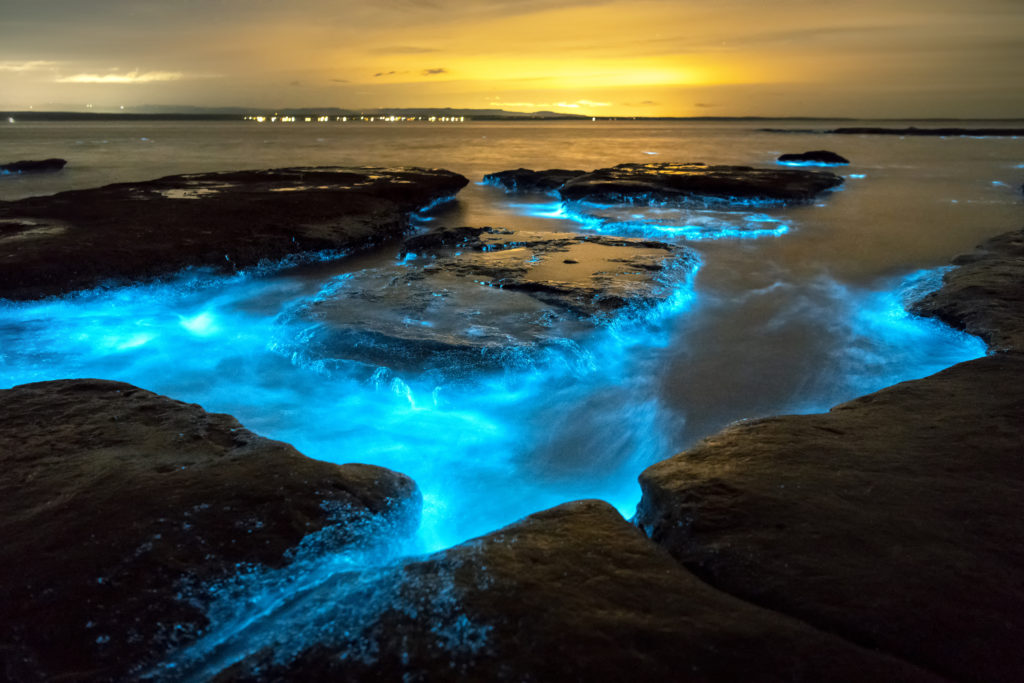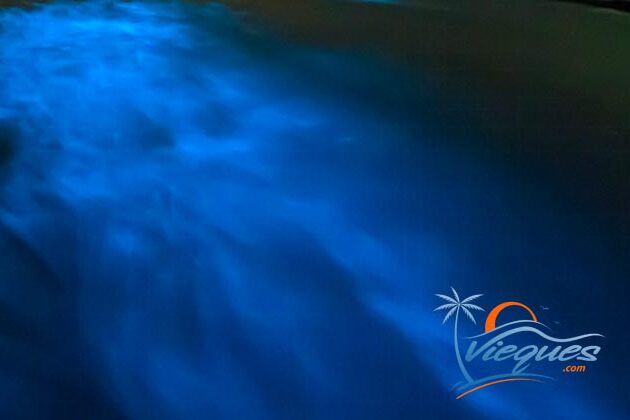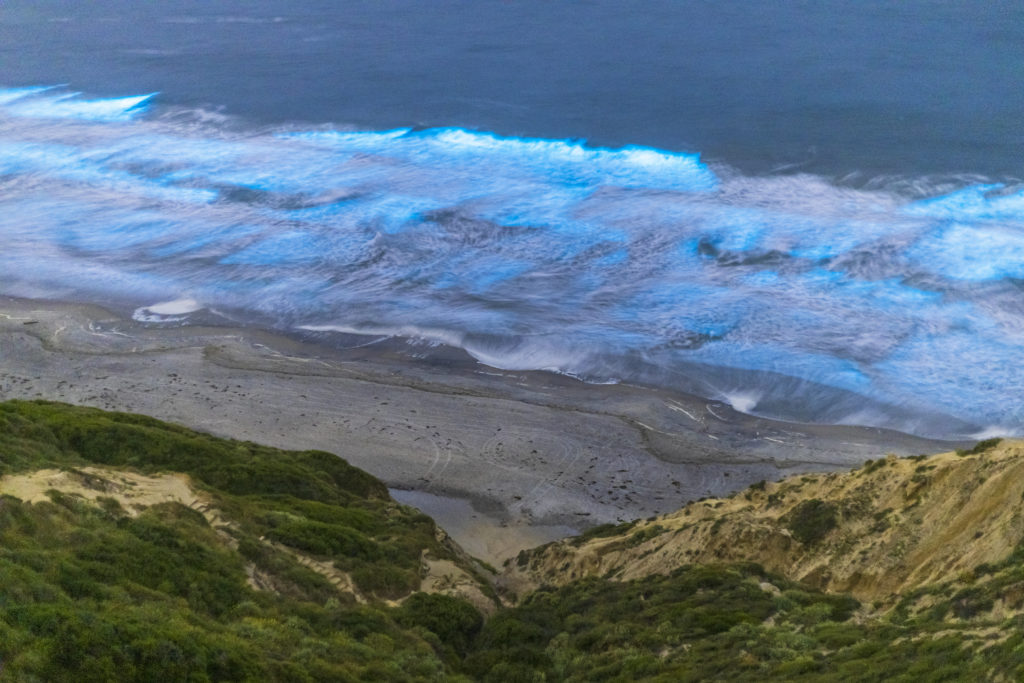You might have seen it in the Academy Award–winning film “Life of Pi”—a blue glow that grows as the main character Pi swirls the water. While this might be the work of CGI in the movie, it’s actually a real phenomenon. In bodies of water around the world, bioluminescent creatures, typically plankton, light up like a firefly when moved, producing an electric blue glow. The occurrence is more common than you might think, but you have to know where to look. Here, we name seven locations where you can experience the otherworldly wonder.
Pro tip: Keep an eye on the moon cycle. The less light, the better!

1. Sam Mun Tsai Beach, Hong Kong
A phenomenon known as red tide (which is, as you might have guessed, when the water turns red, due to a bloom of microorganisms) has been linked to bioluminescence. This is the case with Sam Mun Tsai Beach in Hong Kong, which sometimes has crimson water during the day and glowing blue water at night. Unfortunately, certain types of red tide can be harmful to other organisms, so it’s best to ask authorities before swimming in affected waters.
Where to Stay Nearby: Y Loft (Youth Square)
2. Manasquan, New Jersey
The glowing water off the coast of New Jersey is not from toxic sludge, as one might assume, but from red tide algae. While the glow doesn’t occur all the time, lucky beachgoers might spot glowing blue waves at night.
Where to Stay Nearby: Inn on Main
3. Toyama Bay, Japan
Toyama Bay does not glow because of algae. Rather, it glows because of squid—firefly squid, to be exact. While these specimens typically live deep in the sea, an unusual current brings them to the surface in this bay. In the town of Namerikawa, there’s actually a museum dedicated to firefly squid.
Where to Stay Nearby: Kintarou Onsen Hotel
4. Mosquito Bay, Puerto Rico

Perhaps the most famous of the glowing bays, Mosquito Bay on Puerto Rico’s island of Vieques is a popular tourist destination. As such, it has very specific rules in place to protect it. For instance, kayaking the bay is only permitted with licensed tour guides, visitors cannot swim in the bay, and visitors can’t wear chemicals on their bodies. (That’s right—no bug spray in Mosquito Bay.)
Where to Stay Nearby: Hacienda Tamarindo
5. Indian River Lagoon, Florida
With the most biodiverse lagoon ecosystem in the northern hemisphere (it has more than 3,000 species of flora and fauna), it’s no surprise that the Indian River Lagoon is home to bioluminescent plankton. But, as a bonus, it also has bioluminescent comb jellyfish.
Where to Stay Nearby: Jupiter Beach Resort & Spa
6. Halong Bay, Vietnam
This UNESCO World Heritage Site is often cited for its nearly 2,000 towering limestone pillars and is usually filled with tourists on boats, taking in the views. But at night, it glows—if you’re far away enough from distracting lights.
Where to Stay Nearby: Vinpearl Resort & Spa Ha Long
7. Mission Bay, San Diego

This body of water off San Diego, too, experiences a red tide every few years, producing the same glow found around the world. In fact, the phenomenon occurs along the entire California coast, from Mission Bay to Tomales Bay, and sometimes beyond. More often than not, California’s red tides are not harmful to humans.
Where to Stay Nearby: Omni La Costa Resort and Spa
You Might Also Like:
• 7 Amazing Mother-Daughter Trips to Take This Year• The Ultimate Adults-Only Disneyland Guide
• 25 Things To Know Before Traveling to Japan
• The Ultimate Anchorage Guide: Where to Stay, What to Do, and Where to Eat
• 8 Unexpected Places Around the World With Stunning Fall Foliage
All products are independently selected by our writers and editors. If you buy something through our links, Oyster may earn an affiliate commission.



